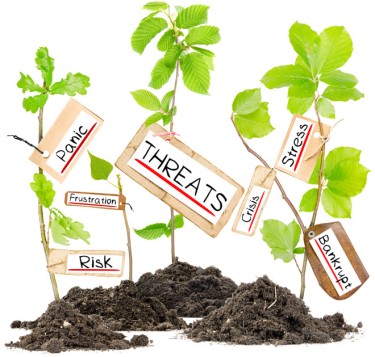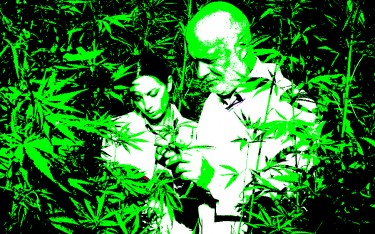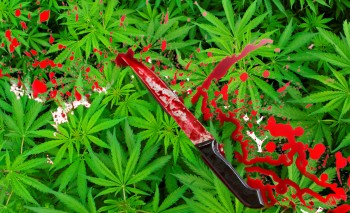
Once upon a time, cannabis was the black sheep of the plant world. The subject of fierce debate, it was demonized by governments, feared by citizens, and shrouded in an aura of danger and mystery.
For decades, the plant languished in the shadows, relegated to the fringes of society and relegated to the status of an illicit substance. But as time passed, attitudes began to shift. People began to question the status quo, to demand change, and to organize around a cause that they believed in.
Through their tireless efforts, laws began to change. Slowly but surely, the world began to see cannabis in a new light - not as a threat, but as a potential source of healing, relaxation, and creative inspiration.
And so, a new industry began to take root. With the stigma of prohibition slowly fading away, cannabis cultivators, processors, and sellers began to emerge from the shadows, eager to bring their products to market and to capitalize on the newfound interest in this once-taboo plant.
But even as the industry blossomed, new threats began to emerge - threats that could not have existed during the days of prohibition. Threats that were invisible, insidious, and difficult to detect.
One such threat was the hop latent viroid - a plant-specific pathogenic RNA that had begun to ravage cannabis crops across the globe. At first, the viroid had gone unnoticed, lurking in the shadows like a silent assassin.
But as more and more growers began to fall victim to its effects, it became clear that something had to be done. The viroid had the potential to destroy entire crops, decimating the fledgling industry and leaving countless people out of work.
And so, a new battle began. A battle not against governments or police, but against an invisible enemy that threatened to destroy everything that the industry had worked so hard to build.
As scientists raced to develop new treatments and growers struggled to protect their crops, the cannabis industry found itself facing a new kind of adversity - one that could not be fought with fists or weapons, but with knowledge, skill, and innovation.
It was a new kind of frontier, a new kind of battle, and a new kind of threat. But the cannabis industry was nothing if not resilient, and it was determined to overcome this latest challenge, just as it had overcome so many others before.
And so, the fight against the hop latent viroid continues. But with each passing day, the industry grows stronger, more united, and more determined to build a brighter future for all.
Now for what’s really going on…
That story is the story of the cannabis industry, how it escaped the clutches of prohibition only to be faced with a new challenge – pathogens!
Hop latent viroid, a highly infectious crop disease, is posing a grave threat to the cannabis industry across the United States. The virus, which is a plant-specific pathogenic RNA, has been called the greatest threat to the industry and can easily spread undetected, affecting the potency of plants and destroying the commercial value of crops.
The pathogen has now spread from California to Massachusetts, and almost all of California's marijuana nurseries were affected in 2021. As cannabis remains illegal on a federal level, growers are not able to ship plants across state lines, which has created a gray area in some state regulations that allows growers to acquire seeds or immature plants from out of state. This has led to an increase in the spread of the virus.
Growers have to take rigorous precautions to prevent the spread of hop latent viroid, including regular lab testing, sourcing plants from pre-tested seed or local stock, and strict sanitation procedures. Companies that cut corners to save time and money are now facing the consequences of the virus, which can only be dealt with by destroying everything affected.
While hop latent viroid is just one pathogen that poses a threat to the cannabis industry, it highlights the importance of scientific testing and the need for higher standards in the industry. As more companies and products enter the commercial cannabis market, the threat of disease puts pressure on businesses to prioritize safety over the bottom line.
The consequences of the virus are not just limited to the financial impact on growers, but also to the health and safety of consumers. Contaminated products could hurt consumers, which emphasizes the need for proper testing and adherence to regulations. However, there isn’t much evidence of this just yet. Nonetheless, it’s important that people not consume these pathogens which is why some form of regulation – especially on the commercial sector – does call for “some” regulation. Mainly within the sphere of product safety.
It's important that this problem be dealt with promptly to prevent further damage to the already fragile cannabis industry, which is facing increasing competition and a drop in demand. The Cannabis Control Commission in Massachusetts is building out testing and lab staff to ensure compliance with regulations, and more research needs to be done to ensure the safety of the industry.
This is something that will become more prevalent as the cannabis industry continues to expand their reach into new markets. In fact, international pathogens could soon be a problem, and how these pathogens impact global markets will have an impact on prices.
The Age of Pathogens
The prevalence of cannabis-related pathogens is a growing concern for the cannabis industry. While hop latent viroid has recently grabbed the attention of growers, there are many other pathogens that have the potential to harm cannabis crops. Some are well-known, like powdery mildew and botrytis, while others are more obscure.
Pathogens like these can cause significant damage to cannabis crops, leading to yield loss, reduced potency, and increased susceptibility to other diseases. They can also be difficult to detect and control, which makes prevention and preparedness essential to maintaining crop integrity.
One way to address this issue is by keeping genetic records of all cannabis plants. By maintaining a record of genetic information for each plant, growers can identify and track specific genotypes that are more resilient to certain pathogens. This will allow them to make informed decisions when choosing which plants to cultivate, and to develop strategies for managing specific pathogens.
Furthermore, maintaining genetic records can also help unlock the potential medical properties that could be locked away in a particular genotype. By understanding the genetic makeup of cannabis plants and how they interact with different pathogens, scientists can identify the chemical compounds and properties that may be useful for treating a variety of ailments.
In addition to genetic records, there are other strategies that can be employed to prevent the spread of cannabis-related pathogens. These include proper sanitation procedures, regular lab testing, and sourcing plants from pre-tested seed or local stock.
It's also important to note that new pathogens are always emerging, and there's a lot that we still don't know about the potential threats to cannabis crops. This highlights the need for continued research and innovation in the industry, as well as a willingness to adapt and evolve in the face of new challenges.
How Small Growers can weather the storm
Small-scale cannabis growers face unique challenges when it comes to protecting their crops from pathogens. Unlike large commercial growers who have access to extensive resources, small growers must rely on more practical and cost-effective methods to ensure the health and vitality of their plants. Here are some of the most practical ways that small grows can protect themselves from pathogens, along with some best practices and tips for building a seed vault.
One of the most important steps small growers can take to protect their crops is to start with clean genetics. This means sourcing seeds or clones from reputable breeders who have a proven track record of producing healthy, pathogen-free plants. By starting with clean genetics, small growers can avoid introducing pathogens into their grows in the first place.
Regular sanitation is also crucial for small grows. This includes regularly cleaning and disinfecting all equipment, tools, and surfaces in the grow area. Growers should also take care to avoid cross-contamination by not moving between grows without cleaning and changing clothes.
Another practical step small growers can take is to implement regular lab testing. This can be expensive, but many labs offer affordable testing packages for small growers. Regular testing can help detect pathogens early, allowing growers to take action before the problem becomes more serious.
Using natural pest control methods is another practical approach that small growers can take. For example, using beneficial insects like ladybugs and praying mantises can help control pests like spider mites and aphids without the use of harmful chemicals.
Building a seed vault is also a practical way for small growers to protect themselves from pathogens. A seed vault is a collection of seeds that are stored in a cool, dry place for future use. By maintaining a collection of seeds from a variety of strains, small growers can ensure that they always have a backup plan in case of crop failure or contamination.
To start building a seed vault, small growers should first determine which strains they want to collect. It's a good idea to focus on strains that are known to be resilient to pathogens and that have a proven track record of success. Once the strains have been identified, growers can start collecting seeds by purchasing them from reputable seed banks or by collecting them from their own plants.
Once the seeds have been collected, small growers should store them in a cool, dry place. A refrigerator or a cool, dark room is ideal for storing seeds. Growers should also take care to label each seed with the strain name and the date of collection.
These are the most practical steps you can take to ensure that no matter how harsh it gets out there, you’re able to weather the storm and keep your ship afloat. By ship, I’m referring to your cannabis grow of course!







